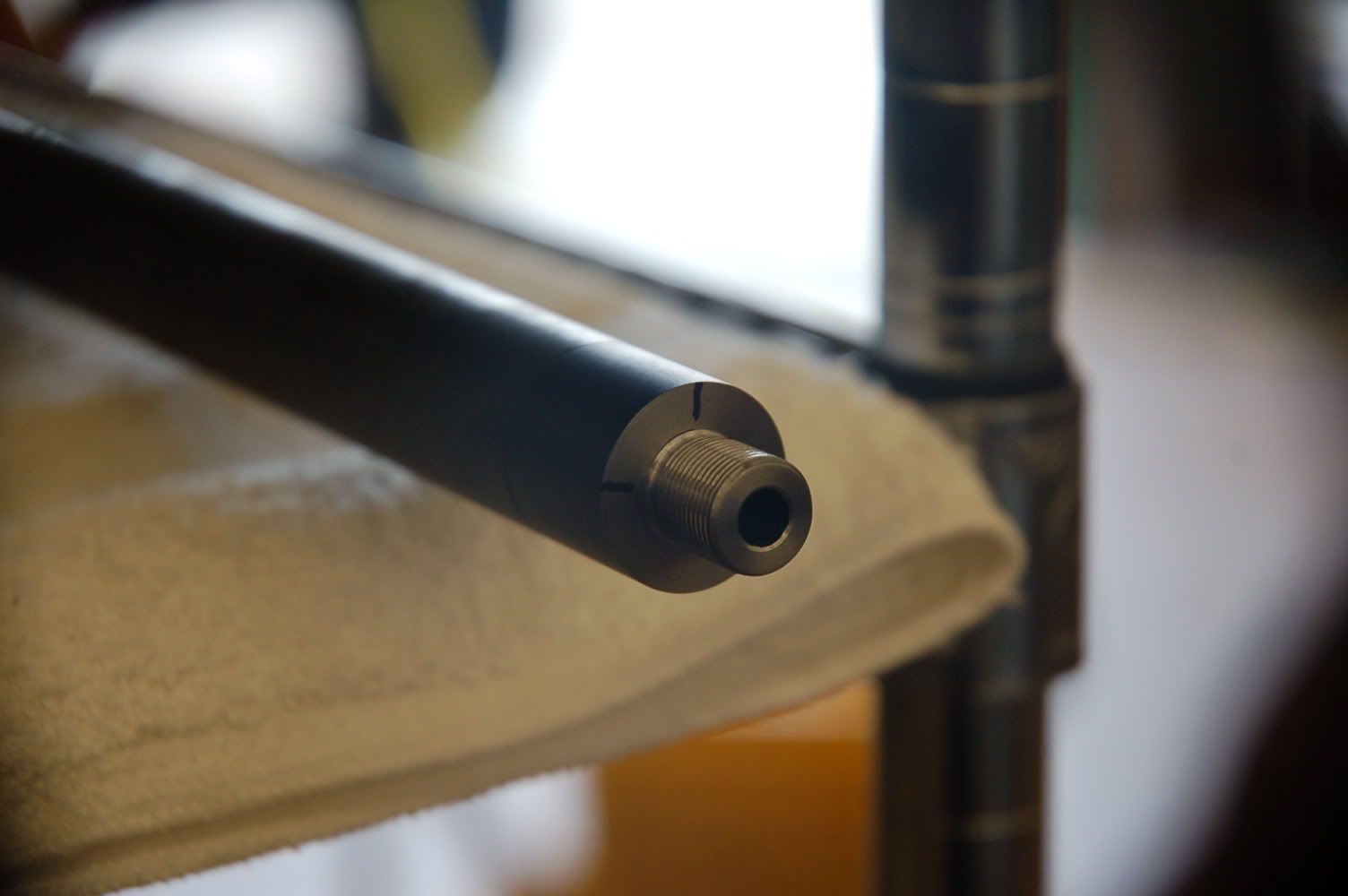K
Ken Worth
Guest
In a recent thread there is the mention of muzzle alignment when cutting a chamber. Question, how do you line up your muzzle bore when cutting a chamber?
Ken, are you asking about the bore relative to the o.d. of the muzzle? -Al
Nope. What would the OD ID relationship of the muzzle have to do with accuracy? What I am asking is if gunsmiths generally think it is important that when the chamber area is dialed in, is it important to accuracy that the muzzle BORE be in alignment also. Simply put when you screw on a barrel, should the muzzle bore point in the same direction that the chamber, action and stock point.
I've tried the range rod method and it sucks. After you indicate it in, take it out and try reindicating it. You will get a different reading.
Butch
I've tried the range rod method and it sucks. After you indicate it in, take it out and try reindicating it. You will get a different reading.
Butch
Shooter53, thanks. This is what I am looking for, a muzzle dialed in with the chamber. Question, if you screw this barrel on an action and zero it, then screw on another barrel chambered this same method, about how much off is the POI on this second barrel from the first?Ken Worth,
To indicate both ends of the barrel requires that the barrel is long enough to protrude far enough out both ends of the headstock of your lathe.
After some practice I've got to the point where I can indicate a barrel to <0.0005" in about 15 minutes.
Hope this answers some questions. Again there are numerous ways to set up and I by no means wish to imply this is the best way, this is how I indicate both ends of a barrel to ensure everything is concentric to the bore.
Butch,
I tend to agree with your comment on removing the rod and getting a different reading upon re-insertion. I had the same problem until I started using the caliber specific indicator rods with the interchangeable pilot bushings.
Butch,
I tend to agree with your comment on removing the rod and getting a different reading upon re-insertion. I had the same problem until I started using the caliber specific indicator rods with the interchangeable pilot bushings.

